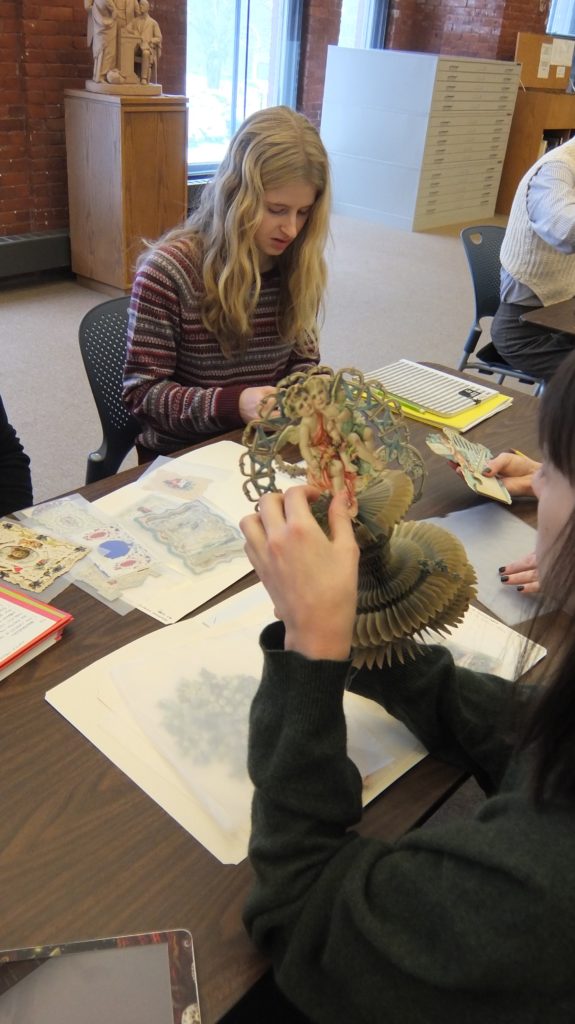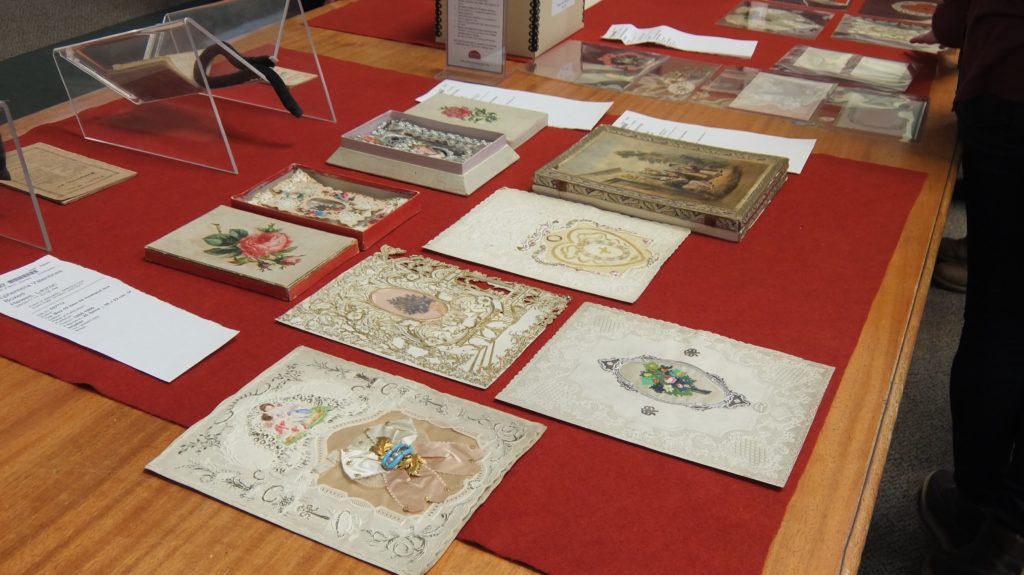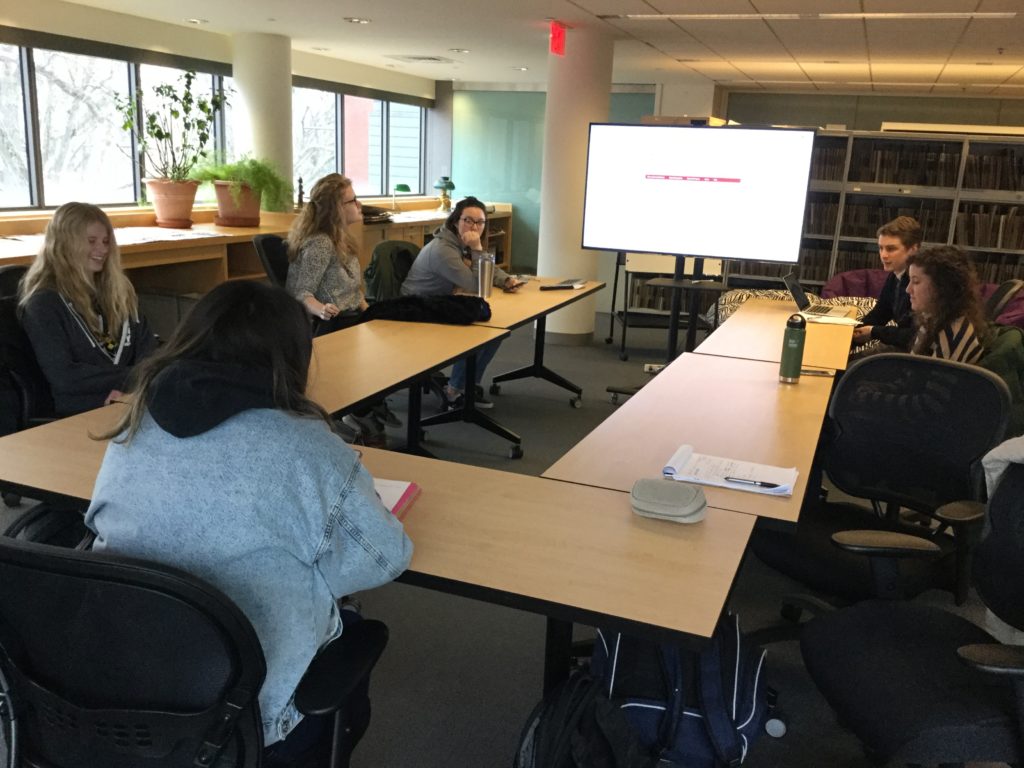Editor’s note: Originally from Texas, Zoe Margolis is an Art History major at Smith College, slated to graduate this upcoming spring (class of 2018). Zoe wrote the first draft of this post on behalf of the students in the Spring 2017 course at Smith College “ARH291: Be My Valentine.” It was later revised by Prof. Kalba for clarity and concision.

To be honest, I didn’t really know what ephemera was before I joined Professor Laura Kalba’s art history course at Smith College, ARH291: Be My Valentine: Ephemera, Ephemerality and Affect From the Victorian Era to Today. The class caught my eye with the promise of field trips and hands-on experience creating original public scholarship in the field of art history. Focusing on a largely unprocessed collection of Victorian-era valentines held at the American Antiquarian Society, along with a variety of online digital artifacts such as GIFS and emojis, the class invited students to investigate a broad range of popular commercial imagery and reflect on how the study of these everyday images both draws upon and departs from the knowledge and skills foregrounded in most art history courses.
Over the semester, we worked to create the online exhibition Victorian Valentines: Intimacy in the Industrial Age. The exhibition explores both handmade and commercially manufactured valentines, their materials and iconography, as well as the sentiments that inspired them. In addition to romantic valentines, the exhibition also includes vinegar valentines, designed to mock and insult their recipient, and other types of ephemera related to the history of courtship and emotions, such as escort cards and “maps of the heart.”


After visiting AAS and the Smith College Archives, each student chose a few of their favorite objects to research and write about for the exhibition. The class then collaboratively decided upon the exhibition’s themes and worked in smaller groups to write the interpretive “wall texts” and design specific sections of the website. Students assumed additional responsibilities, ranging from copyediting and quality control to social media “ambassador” to project manager. Final revisions to the exhibition were completed over the summer by Sally Stack ’19 and Clara Rosenberg ‘20.
We could not have completed this exhibition without the guidance of our fearless leader, Professor Kalba; Lauren Hewes, Nan Wolverton, and Molly Hardy, to only name a few of the people at AAS who helped us with the research, conceptualization, and design of the exhibition; and Ken Albers, from the Roy Rosenzweig Center for History and New Media, who not only taught us how to use Omeka but also provided Sally with essential technical assistance during the summer. We also wish to thank the Five College Blended-Learning Steering Committee for its generous financial support.
